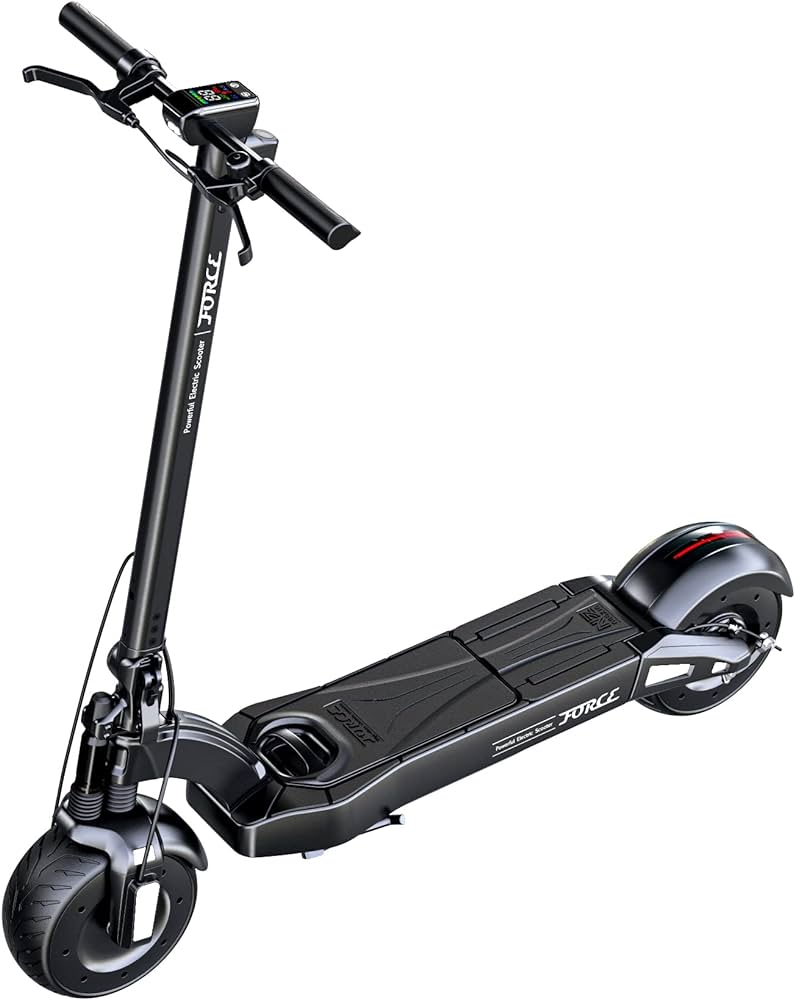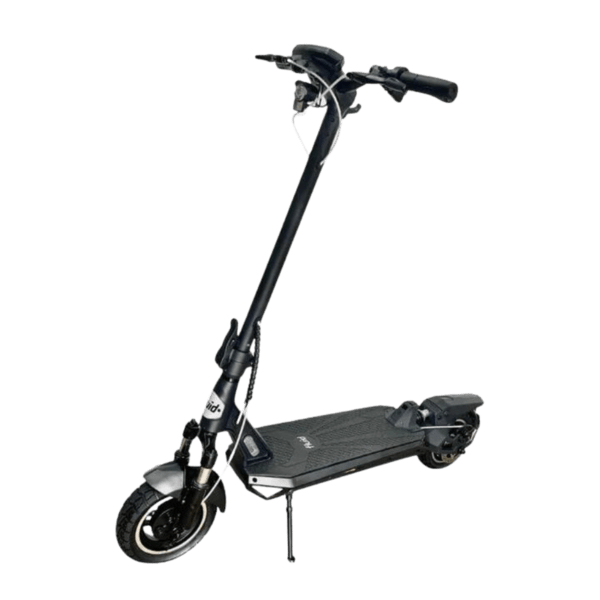Yes, 30 mph is considerably fast for an electric scooter.
Understanding Electric Scooter Speed
Electric scooters, gaining popularity for their convenience and eco-friendliness, vary widely in speed. This section delves into the typical speed ranges, how 30 mph fits into the spectrum, and the factors influencing these speeds.
Average Speeds of Electric Scooters
Electric scooters typically range in speed from 15 mph to 25 mph. Entry-level models often cap at around 15 mph, suitable for casual or new riders. Mid-range scooters might push the envelope to 20-25 mph, balancing speed with safety for everyday commuting. High-performance scooters can exceed 25 mph, with some even reaching 40 mph, catering to more experienced riders or those with a need for speed.
How 30 mph Compares to Other Electric Scooters
Riding at 30 mph places a scooter in the higher end of the speed spectrum. This speed outpaces most basic and mid-level models, positioning it closer to performance-oriented scooters. For reference, the Xiaomi Mi Electric Scooter, a popular choice for city commuters, tops out at about 15 mph, while high-performance models like the Dualtron Thunder can exceed 50 mph.
Factors Affecting Electric Scooter Speed
Several factors contribute to the maximum speed of an electric scooter:
- Motor Power: Generally measured in watts, higher motor power correlates with higher speeds. A scooter with a 250-watt motor might reach speeds of 15 mph, whereas a 2000-watt motor could propel a scooter up to 40 mph or more.
- Battery Life: A higher-capacity battery doesn’t just extend the range but can also enhance performance. However, larger batteries increase the scooter’s weight, potentially affecting speed.
- Efficiency: The efficiency of the motor and controller also impacts speed. More efficient systems deliver power more effectively, translating to faster acceleration and higher top speeds.
- Rider Weight and Load: Heavier riders or additional cargo can decrease top speeds due to increased demand on the motor.
- Terrain and Incline: Riding uphill or on rough terrain will typically reduce speed, as the motor works harder to overcome gravity and surface resistance.
- Aerodynamics: At higher speeds, aerodynamic drag becomes a significant factor. Riders can increase speed by adopting a more aerodynamic position.
- Wheel Size and Type: Larger wheels can contribute to a smoother ride and better speed on uneven surfaces. Pneumatic (air-filled) tires often offer better performance and comfort compared to solid tires.
- Build Quality and Materials: The overall build quality, including frame material and design, can influence scooter speed. Lighter materials like carbon fiber enhance speed but may increase the cost.
The Significance of 30 mph
Reaching a speed of 30 mph on an electric scooter is significant due to its impact on safety, legal implications, and how it compares to other transportation modes. Understanding these aspects helps riders make informed decisions and navigate the complexities of using high-speed electric scooters.
Safety Concerns at Higher Speeds
Traveling at 30 mph significantly elevates the risk of accidents and injuries. The force of impact during a collision, either with a vehicle, object, or the ground, intensifies greatly at higher speeds. For instance, a fall at 30 mph not only has a higher chance of causing severe injuries but also reduces the reaction time to avoid obstacles.
Key Safety Statistics:
- Helmets can reduce the risk of head injury by around 85%, according to Helmet Safety Statistics.
- High-speed scootering increases the need for protective gear like gloves, knee pads, and elbow pads.
Legal Speed Limits for Electric Scooters in Different Regions
Legal limits for electric scooters vary widely:
- In many U.S. states, the legal limit for electric scooters on public roads is 20 mph.
- European countries like Germany and France typically have a limit of 25 km/h (about 15 mph).
- The UK is currently reviewing its laws, considering a maximum speed of 15.5 mph for e-scooters.
Riding at 30 mph often exceeds these limits, potentially leading to legal consequences, including fines or confiscation of the scooter.
Comparing with Other Modes of Transportation
At 30 mph, electric scooters begin to rival the speed of other urban transportation modes:
- Urban cycling speeds average around 15-20 mph.
- City buses in congested areas often average below 15 mph.
- Cars in urban settings may not significantly outpace a 30 mph scooter, considering stoplights and traffic.
Technical Aspects
The technical elements of electric scooters such as motor power, battery life, aerodynamics, and the impact of weight and terrain play pivotal roles in achieving, maintaining, and understanding the implications of a 30 mph speed. Delving into these aspects offers insights into the engineering challenges and solutions in high-speed electric scooter design.
Motor Power and Battery Life at Higher Speeds
The motor power and battery life of an electric scooter are key determinants of its ability to reach and sustain higher speeds like 30 mph.
Motor Power:
- High-speed scooters often feature motors with at least 500 watts of power, capable of reaching top speeds beyond 25 mph.
- The more powerful models, such as those used in performance scooters, can have motors exceeding 2000 watts, enabling top speeds of 40 mph or more.
Battery Life:
- Higher speeds demand more energy, which can lead to reduced battery life. For instance, a scooter that might last 30 miles at 15 mph could see its range significantly drop when running at 30 mph.
- Battery capacity, typically measured in watt-hours (Wh), needs to be higher to maintain practical ranges at high speeds. For example, the Segway Ninebot MAX, with a battery capacity of 551 Wh, boasts a range of up to 40.4 miles under optimal conditions but would see a reduced range at higher speeds.
Aerodynamics and Speed
Aerodynamics play a crucial role in achieving higher speeds such as 30 mph:
- Sleek, streamlined designs help reduce air resistance, enabling the scooter to move faster and more efficiently.
- Rider position can also influence aerodynamic efficiency. A crouched position can reduce drag and allow higher speeds.
Impact of Weight and Terrain on Speed
Weight and terrain are significant factors affecting scooter speed:
Impact of Weight:
- Additional weight, whether from the rider or cargo, requires more power from the motor to maintain speed, impacting the overall top speed and efficiency.
- High-performance scooters are often heavier due to larger batteries and more robust frames, necessitating a balance between weight, power, and speed.
Effect of Terrain:
- Rough or uphill terrain demands more power and can substantially reduce the scooter’s speed. For instance, a steep incline can decrease the speed of a scooter by 5 to 10 mph, depending on the motor’s power and the weight it’s carrying.
- Smooth, flat surfaces are ideal for reaching maximum speeds and can enhance battery efficiency compared to uneven or inclined terrains.
Practical Considerations
While reaching speeds of 30 mph on an electric scooter can be thrilling, there are practical considerations to weigh, including the necessity and suitability of such speeds in different settings, and the importance of rider skill and experience.
When is 30 mph Practical or Necessary?
Riding at 30 mph isn’t always practical or required. This speed is generally more than what is necessary for typical urban commuting, where lower speeds can navigate through traffic more safely and efficiently. However, in certain contexts, such as:
- Long-distance commuting: For covering longer distances more quickly, especially in areas with minimal traffic.
- Riding in less-congested areas: In suburban or rural areas, where roads are less crowded, riding at higher speeds can be more practical.
- Competitive or recreational use: For enthusiasts or in situations like racing or off-road riding, higher speeds add to the thrill and challenge.
Riding at 30 mph in Urban vs. Rural Settings
The suitability of riding an electric scooter at 30 mph varies significantly between urban and rural environments.
Urban Settings:
- Highly Congested Areas: Dense traffic and frequent stop-and-go scenarios make high speeds impractical and risky.
- Legal Restrictions: Many cities have legal speed limits for electric scooters, often below 20 mph.
- Safety: At such high speeds, navigating through pedestrians, vehicles, and urban obstacles can be challenging and dangerous.
Rural Settings:
- Open Roads: Less traffic and wider roads in rural areas can make riding at 30 mph more feasible and enjoyable.
- Terrain: The type of terrain can also influence practicality. Smooth, flat roads are ideal for higher speeds, unlike uneven or hilly landscapes.
How Rider Skill and Experience Matter
Rider skill and experience significantly impact the safety and practicality of riding at 30 mph.
- New Riders: Beginners should avoid high speeds as they’re still getting accustomed to handling and balancing the scooter, along with reacting to traffic and obstacles.
- Experienced Riders: Those with more experience can better handle the demands of high-speed riding, having developed the necessary reflexes, balance, and situational awareness.
- Training and Practice: Regardless of one’s initial skill level, progressively increasing speed with continuous practice is essential for safe high-speed riding.
Safety Measures
Riding an electric scooter at high speeds such as 30 mph demands strict adherence to safety measures. This involves using appropriate safety gear, adhering to safe riding practices, and understanding the role of scooter design in ensuring rider safety.
Recommended Safety Gear for High-Speed Riding
For high-speed electric scooter riding, investing in quality safety gear is crucial:
- Helmet: A full-face helmet provides the best protection against head injuries and is essential for high-speed riding.
- Protective Clothing: Wear clothing like jackets and pants made from abrasion-resistant materials to protect against cuts and bruises from falls.
- Gloves: High-quality gloves protect the hands and improve grip.
- Knee and Elbow Pads: These offer additional protection to knees and elbows in case of falls.
Selecting gear certified for safety standards (like those set by DOT or CE) ensures a higher level of protection.
Tips for Safe Riding at 30 mph
Safely riding an electric scooter at 30 mph requires more than just protective gear. Here are some key tips:
- Know Your Route: Familiarize yourself with the route, noting any potential hazards like potholes, sharp turns, or high-traffic areas.
- Be Visible: Use reflective clothing and ensure your scooter has functioning lights, especially when riding in low-light conditions.
- Maintain Distance: Keep a safe distance from vehicles, pedestrians, and other obstacles.
- Respect Weather Conditions: Avoid high speeds during poor weather conditions like rain, which can reduce visibility and road grip.
- Regular Checks: Ensure your scooter is in top condition, checking brakes, tires, and lights regularly.
The Role of Scooter Design in Safety
The design of the electric scooter itself plays a critical role in ensuring safety at high speeds:
- Stable Frame: A robust and well-balanced frame provides stability at high speeds.
- Effective Braking System: High-speed scooters require high-quality brakes, such as disc brakes, to ensure quick and safe stopping.
- Suspension: Good suspension systems help navigate bumpy roads and maintain control.
- Tire Quality: Durable tires with appropriate tread for various surfaces improve grip and reduce the risk of accidents.


